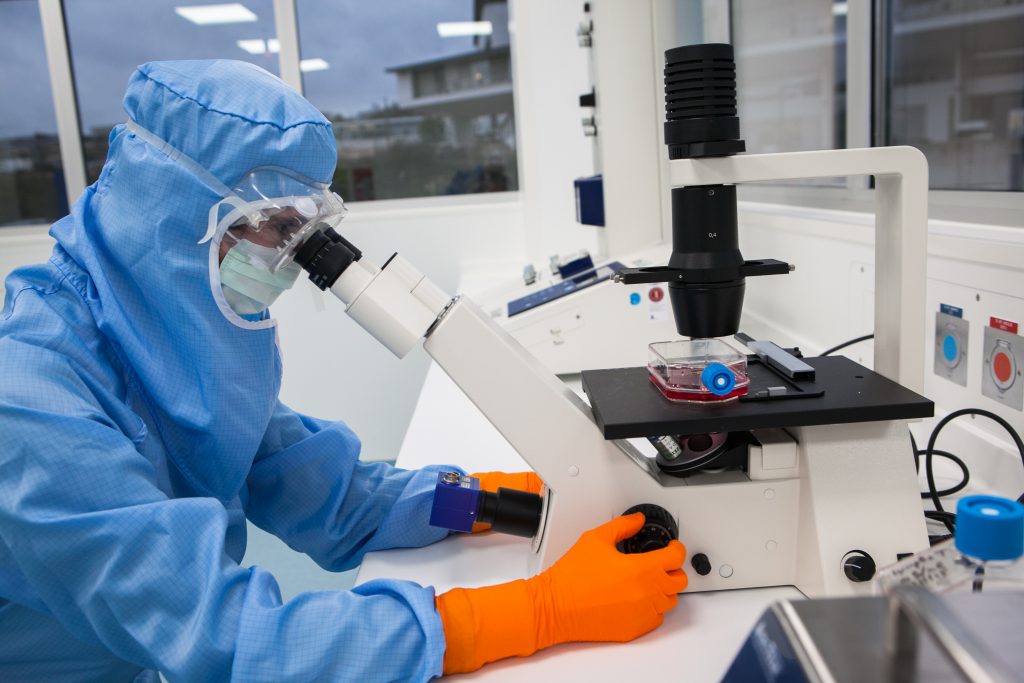3rd axis: Comprehensive individual care
The scientific skills inherent of the following themes will be developed within the framework of this third priority field:
- Health: pharmaco-imaging, theranostics, lipoproteins, immunology, inflammation, oncology, oncogenetics, lipids, genetic and developmental disorders
- Innovative intelligent systems technologies: drug distribution, labs-on-chips, new imaging probes
- Cognitive sciences: cognitive stimulation, rehabilitation, neuronal plasticity, ergonomics, virtual reality
- Human and social sciences: trade and economy, communication, medical ethics, sociology.

The development of new drugs is increasingly costly and complex, whether from a regulatory point of view or a technological one. The attrition rate of newly marketed molecules has increased over the years. This observation constitutes a major hurdle for innovation and improvement of health benefits for the patients. The financial handicap of the drug approach is now widely recognized, and the development of comprehensive approaches in health care, taking into account the environment, psychosocial risks, prevention and health education in addition to innovative therapeutic strategies, now appears to be a major challenge.
This priority field aims to adapt each patient’s specific treatment based on clinical research and economic resources in Bourgogne – Franche-Comté. Researchers propose to develop a “therapeutic toolbox” combining new drug and non-drug approaches that will benefit from targeted diagnostics and therapies based on novel imaging solutions and new medical devices. This vision, which relies on innovative technologies combining drug and non-drug approaches, is relevant to meet public health and international competition challenges in this industrial sector.
As far as the drug approach is concerned, the LABEX LipSTIC partners have discovered and are testing systems of drug delivery via lipoproteins, in other words drugs coupled to lipoproteins to specifically target inflammatory or cancer tissues. A highly sensitive method for quantifying circulating endotoxins had been developed, and a patent has been filed.
This LABEX will develop preventive approaches by evaluating the role of lipoproteins beyond their usual implication in cardiovascular diseases, in the case of cancer for example, or upstream of surgical interventions with a high risk of septicemia.
Thus, the LABEX LipSTIC is developing new strategies to prevent and treat inflammation and septicemia by producing recombinant human proteins likely to be relevant therapeutic tools to reduce endotoxin levels and improve the clinical fate of intensive care patients. The expertise developed in genetic diagnostic and next-generation sequencing will be adapted to these pathologies.
Another novelty in terms of inflammatory diseases is the patent recently filed for two innovative cell therapy products by the INtegrated Centre for REsearch in Inflammatory diseASEs (FHU INCREASE). These products were first designed thanks to a greater understanding of the immune system, and they are now further developed for use in the treatment of inflammatory diseases.
As far as novel imaging solutions are concerned, the partners of Equipex IMAPPI are well into the development of new imaging probes (by combining several multimodal molecular imaging techniques – MRI and PET scanning) and of theranostic agents for diagnostic and targeted therapy. The therapeutic fields involved are mainly related to cancer, and will also include cardiovascular and neurological diseases. This innovative approach (only a few sites possess such a prototype across the world) has attracted private companies and led to the creation of the Pharmimage® consortium, which gathers private firms (among which Onco-Design, Cyclo-pharma and Trifoil Imaging) and health institutions. The activity of this cluster is devoted to the discovery and use of biomarkers able to evaluate treatment efficacy.
In regards to non-drug approach, the consortium, whose activity is focused on handicap and ageing, is involved in the development of novel rehabilitation/learning techniques using more particularly virtual reality tools. It has coordinated a European project aimed at implementing rehabilitation programs through music for Alzheimer patients. The consortium has also developed an ergonomic approach to product design and production, based on the “design for all” concept. Its objective is to create a living lab to test in an interactive way the efficiency of new rehabilitation/learning techniques or new products designed for handicapped/aged people, while integrating expertise from social and human sciences (sociology, ethics) and engineering sciences. The ambition is to develop an international center for the optimisation of human performance whose activity will be mainly devoted to the handicaps and disabilities linked to ageing.
The research consortia of this UBFC “therapeutic toolbox” will develop and reinforce their interactions at different levels. A tight cooperation between the IMAPPI and LipSTIC projects and the FHU INCREASE is likely to bring about substantially improved diagnostics by identifying homogeneous families of pathologies leading to better adapted specific treatments. The aim is also to further supplement the therapeutic toolbox with cancer-targeted tools, making the most of the input of immunology boosted by the emerging scientific excellence of talented junior researchers, and of the input of new imaging techniques for the analysis of the immunological responses of the tumor microenvironment.
Interdisciplinary collaborations with the first priority field will rely on UBFC expertise in intelligent systems to develop lab-on-chip devices – for faster, improved diagnostics – and microrobotics for specific medical applications. Another interdisciplinary ambition is to promote nanotechnological applications for clinical evaluation in biomedical research, using innovative methodologies whose hospital use could be considered in 2020.
An important example in cancer research is given by the development of heat shock protein (HSP) sensors, which are sensitive enough to detect one individual molecule within a physiological medium. These works are overseen by the INSERM, and imply physics and engineering researchers from uB and UFC
Human and cognitive sciences will directly collaborate with health and engineering sciences to help make the best of the patient’s individual profile and thereby design new devices and adapt treatments. This third priority line of research is aimed at connecting drug and non-drug approaches at the healthcare level by focusing on chronic diseases, to test a patient-centered integrated therapeutic approach by exploiting the patients’ cognitive, emotional and social capacities in a relevant manner, so as to achieve optimal effects of innovative drugs and devices.
